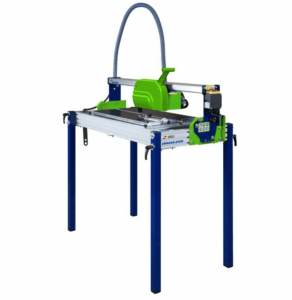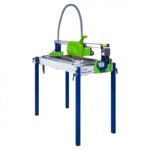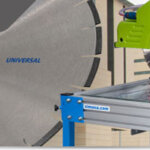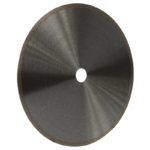
Contents
Using a wet tile saw
Cutting tile, or similar materials, necessitates the use of specific tools in order to produce a good and tidy outcome. Although there is a manual tile cutter, such as, for straightforward work there is still a tile saw (specifically, a wet tile saw) which is the method of choice for both novices and professionals. A wet tile saw is quicker, simpler and produces a good looking finish.
But why are there saws we like masonry saws? How does a wet saw work? And most importantly, what is a wet tile saw? There are typical inquiries for the naive user of the tool. Let’s break it down to know what is a wet saw and why it’s crucial for cutting tiles.
What is a wet saw to cut tile?
A wet tile saw is a power tool with a diamond blade that is used to quickly, safely and accurately cut tiles. The defining feature of a wet saw is its integrated water system, which keeps the blade cool and minimizes dust. This water-cooling mechanism protects against overheating, health hazards and smooth functionality. The use of water in a tile saw is absolutely essential for the durability and the quality of the saw cut.
But, how does a wet saw work? It cools the blade, lubricates the cutting edge and reduces dust. With the help of reducing friction, the saw can cut through materials such as porcelain, ceramic or natural stone without the chance of cracking or chipping.
Having understood what is meant by a wet tile saw, we will look at the main reasons to employ it.
Reason #1: Wet tile saws minimize dust
Among the most significant benefits of a wet saw is its potential to drastically minimize dust generation during sawing. This is more than just a matter of keeping your workspace clean; it’s a critical safety feature. Material such as tile, stone, and concrete contain silica, a natural mineral in which dust particles, i.e. Inhalation of silica dust can lead to serious lung conditions, including silicosis.
By using a tile saw with water, the dust is effectively captured and suppressed, eliminating the need for specialized respirators in most cases. Therefore, wet tile saws are the most safe method for tile cutting and similar materials.
Reason #2: Wet saws to cut tile make cleaner cuts
If you’re aiming for a professional finish, using a wet tile saw is essential. Water serves as a lubricant and heat sink, keeping the blade and tiles from overheating. This reduces the likelihood of chipping, cracking, or other imperfections that can occur when cutting dry. Further, the cooling is not limited to the tool, but it also acts on the blade maintaining its keenness and accuracy.
For DIY projects or professional renovations, what is a wet saw if not the tool that guarantees smooth, clean cuts every time?
Reason #3: Diamond blades last longer on wet saws
Expensive diamond blades are a big cost, and tile saw equipped with water does prevent costly blades from rusting to destroy pieces of the blade. Water cooling system avoids overheating, which can lead the blade to warp, crack, or to become dull prematurely. By reducing friction and heat, a wet saw prolongs the service life of the blade, thus saving you money and providing reliably good cutting performance.
Although it may be possible to dry cut, blade wear and tear is grossly excessive. For this reason, professionals and DIYers alike prefer wet saws for cutting tile and similar materials.
Why choose a wet tile saw?
Whether your goal is achieving precise cuts, maintaining safety, or preserving your tools, a wet tile saw is the optimal choice for cutting tile, masonry, or natural stone. If you learn how to use a wet tile saw and that it is vital, then you can tackle any tile-cutting job with a professional outcome.





